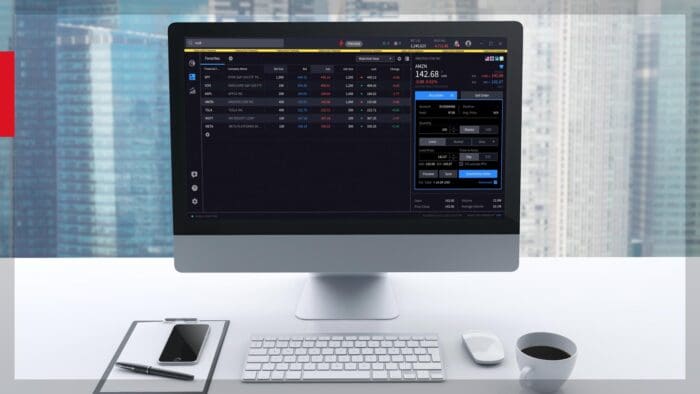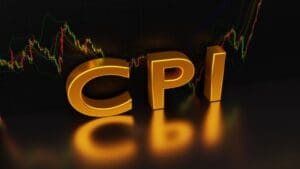This morning we received the latest report on inflation. In October, the Consumer Price Index (CPI) rose by 0.2% on a headline basis and 0.3% excluding food and energy. The readings were in-line with market consensus, but this was the third month in a row that the core rose by 0.3%. That annualizes to about 3.6%. The last time I checked, 3.6% was meaningfully above 2%.
Yet the prevailing view is that the Fed will cut rates once again in December. The CME FedWatch tool shows an 82% chance of another 25 basis point cut, and the IBKR ForecastTrader shows a 77% chance that rates will not be set above 4.375% at the December meeting. Then again, in an interview this morning, Minneapolis Fed President Kashkari said that “another rate cut is certainly possible” in December. Who are we to believe, the data, or a regional Fed President – even if he is currently a non-voting member of the FOMC?
I’ve been around markets too long to advocate for “fighting the tape.” If the market is convinced of an outcome, it is usually better to respect it, at least in the short term. Contrarian opinions are quite important – sometimes the market does indeed get it wrong, and it is crucial to stress-test any investment thesis – but not necessarily when it comes to an impending FOMC meeting. The Powell Fed does not like to surprise markets. So, until or unless we hear Fed talking heads pushing back on the prevailing narrative, the simplest assumption regarding is currently the most obvious one.
But is it the correct one for the economy? I’m highly skeptical of that. Last week we wrote:
My view is that the Fed needn’t have rushed to cut rates in September, nor is there a pressing need to continue cuts. Frankly, there is little real-world evidence that monetary policy is restrictive in practice. There are few, if any, signs of credit market stress, stock markets are at all-time highs, and a 4.1% unemployment rate would have been considered full employment throughout much of recent American history. Quantitative tightening (QT) has reduced the Fed’s balance sheet substantially, though it is far larger than its pre-Covid levels. And while it has reduced the market’s dependence upon reverse repos, it is not as though QT is causing any particular stress
I consume quite a bit of financial media and I’ve yet to hear anyone complain that monetary conditions are preventing them from doing anything they wanted to. They’re not preventing bitcoin’s price from going vertical. During their most recent earnings reports, major investment banks crowed about their investment banking revenues, meaning that corporate borrowers were able to raise money without concern. And not only are major stock indices at or near record highs, seemingly every day there is some oddball name with a triple-digit rise thanks to a relatively minor piece of news.
To be fair, none of these things fall directly under the purview of the Fed’s dual mandate of stable prices and maximum sustainable employment, but hot, if not overheated, financial markets do nothing to quell prices that are already rising faster than the Fed would like. At some level, the market recognizes this. On the day after the September 18th meeting, Fed Funds futures were pricing in a rate of 2.85% for December 2025. The current expectation is for 3.81%, nearly a full point higher. That is considerably above the median expectation of 3.375% expressed in the most recent “dot plot”, the Summary of Economic Projections from the FOMC’s September meeting. Considering that the market has spent most of the past year pricing in more aggressive rate cuts than the Fed was willing to offer, this is a significant change in sentiment.
And that is why I am concerned that the Fed is ready to spike the football before reaching the end zone. For those of you who don’t follow American football, that occurs when a player prematurely celebrates scoring a touchdown. In this recent example, the New York Jets (my hapless team) were able to win the game in spite of this mindless blunder. But the folks on the FOMC need to have a better record than the Jets, who perpetually disappoint. Today’s stock market reaction is more of a relief rally, with as expected inflation statistics doing nothing to upset the prevailing trend. But the Fed and the markets need to get on the same page about rates and inflation. We can’t fight inflation by lowering rates.
Join The Conversation
For specific platform feedback and suggestions, please submit it directly to our team using these instructions.
If you have an account-specific question or concern, please reach out to Client Services.
We encourage you to look through our FAQs before posting. Your question may already be covered!
Leave a Reply
Disclosure: Interactive Brokers
The analysis in this material is provided for information only and is not and should not be construed as an offer to sell or the solicitation of an offer to buy any security. To the extent that this material discusses general market activity, industry or sector trends or other broad-based economic or political conditions, it should not be construed as research or investment advice. To the extent that it includes references to specific securities, commodities, currencies, or other instruments, those references do not constitute a recommendation by IBKR to buy, sell or hold such investments. This material does not and is not intended to take into account the particular financial conditions, investment objectives or requirements of individual customers. Before acting on this material, you should consider whether it is suitable for your particular circumstances and, as necessary, seek professional advice.
The views and opinions expressed herein are those of the author and do not necessarily reflect the views of Interactive Brokers, its affiliates, or its employees.
Disclosure: ForecastEx
Interactive Brokers LLC is a CFTC-registered Futures Commission Merchant and a clearing member and affiliate of ForecastEx LLC (“ForecastEx”). ForecastEx is a CFTC-registered Designated Contract Market and Derivatives Clearing Organization. Interactive Brokers LLC provides access to ForecastEx forecast contracts for eligible customers. Interactive Brokers LLC does not make recommendations with respect to any products available on its platform, including those offered by ForecastEx.
Disclosure: Forecast Contracts
Forecast Contracts are only available to eligible clients of Interactive Brokers LLC, Interactive Brokers Canada Inc., Interactive Brokers Hong Kong Limited, Interactive Brokers Ireland Limited and Interactive Brokers Singapore Pte. Ltd.




















Now this is an artical I can agree with, but it raises the question of why the rest of the media does not see it this way? What are ‘we’ missing or what are ‘they’ not seeing? All I have to add is to ask what the CPI, not the core, would have been if energy/oil had not been at such low levels during this period? Would the Fed excuse that as ‘trabsitory’ or non-relevant?
I specifically mention to many of my pears that if the FED cut 50 bp in September they would not be maintaining there long cautious path about inflation. Surely enough, they came up with a 50 bp while the core inflation report was to be release 3 days later. It did not make any sense to do a 50 bp base on the press conference we have had for a year: telling us they must be cautious yadi yada. 3 days later, the core inflation came up 0.1 higher. The election must have played a role in this decision. Base on the Fed year long plan the logical path was 25 bp. Not to mention that the best time to freeze rate was in the last meeting. They could had fix there 50 bp by freezing rate in November. They did not. Well we know now Fed Powell is a democrat. No human can be fully independant in any institution. We have another proof. The 50bs was i case Donald Trump won. Now that he has. Let’s put another 25 bp on top. If he had not, they would had freeze.
The Fed is acting as if a run and shoot strategy is the best play 10 inches from the end zone. We surely have seen many interception for a defense 99 yards touch down. That’s what the FED did. Turn his running game playbook into a non sense playbook under “pressure” The QB thrown that pass in the flat instead of giving the ball to the full back so they can finish the job square. Now, I am just waiting to see who is going to catch the ball in the flat. Deon or Jerry? Place your bet.
There is a lot of debt that must be refinanced in 2025. The fed is presumably trying to get rates down to prevent refinancing at higher levels. The fed should pause as .75 was the correct reduction for 2024. Trump policies are generally more inflationary, creating additional concerns over further reductions. Deporting millions of low wage workers has the potential to create labor shortages while reducing demand. This could result in stagflation but could potentially result in closing of businesses created by lack of workers. Tariffs will obviously increase prices. Without workers, it is unlikely to increase manufacturing in the US unless the facilities are almost purely autonomous. Hard to know if government efficiency will result in any meaningful change in spending and if it will free up workers for other employment. Doubtful they will be quick to work in restaurants, construction, etc.